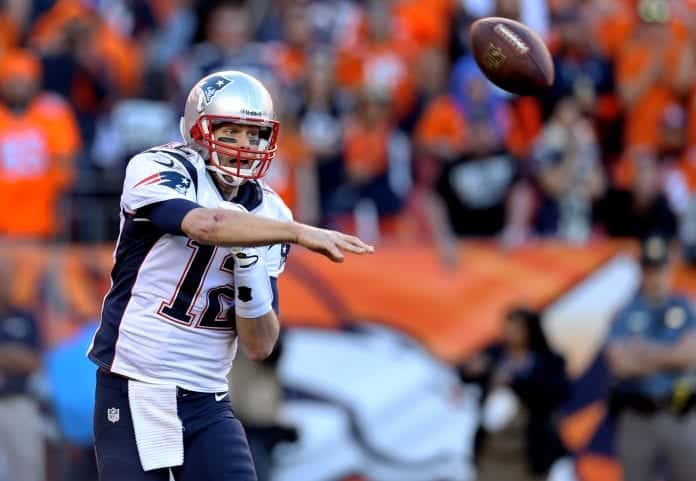Tom Brady is a first-ballot Hall of Famer and possibly the greatest quarterback to ever play the game of football. This Saturday, though, he found himself in an unfamiliar situation: the Wild Card Round of the playoffs, which the New England Patriots have managed to avoid for each of the last nine years. That extra week off has proved to be rather important in the past since the Patriots have never won a Super Bowl without that first-round bye. Unfortunately for New England, Brady wasn’t able to break that trend this past weekend against the Tennessee Titans. His offense only managed 13 points, and Brady himself threw for just 209 yards, no touchdowns, and one game-losing interception. Put mildly, it was not his best outing, and it casts significant doubt on his future in New England.
Using the OSM to analyze Brady’s game against the Titans
Brady’s subpar performance is perhaps best illustrated by his PFN’s Offensive Share Metric (OSM) grade. The grading system measures how much of a player’s statistical production they were directly responsible for by combining numerous advanced metrics into one simple number that represents their overall impact on their offense. Brady’s grade during Wild Card Weekend was appallingly low, at 4.56. That means he had almost no effect on the Patriots offense, and that the limited success that the offense did manage to find was created by his teammates. An examination of the metrics involved in creating the grade rapidly reveals why his grade was so low.
As an example, consider Brady’s intended air yards, or how far he threw the ball downfield. On average, his pass attempts traveled eight yards beyond the line of scrimmage before they were either caught or fell incomplete. By quarterback standards, that is a decent average, but in Brady’s case, it is slightly misleading, because his average on completions was significantly lower, at only 3.5 yards. This discrepancy implies two key things: That most of those downfield throws resulted in incompletions, and that a large percentage of his yardage came on shorter passes, forcing his wide receivers and running backs to do more work after the catch.
Brady’s inconsistency on deeper passes against the Titans also heavily affected his completion percentage, another factor involved in calculating the OSM. As a result, he only completed 54.1% of his passes. Most people who are even loosely familiar with football statistics will recognize that as a relatively low percentage. However, it is actually worse than it initially appears.
For each game, the NFL calculates a quarterback’s expected completion percentage; the percentage of passes that a quarterback should have completed based on the situation that the player was in at the time. According to their calculations, Brady’s expected completion percentage on Saturday was 67.2%, significantly higher than his actual percentage. Put another way, 13.2% of his passes that should have resulted in completions instead fell incomplete. Brady, a quarterback famous for his clinical efficiency, completely failed to meet that standard on Saturday night.
The Tennessee game represents a troubling trend for Brady this season
Brady’s failure against the Titans didn’t just appear out of nowhere. Whether you measure his season using traditional metrics or with the OSM, in 2019 he had one of his worst seasons in years. His 4057 yards and 24 touchdowns were his lowest totals since 2016 and 2008, respectively; both seasons in which his year was cut short by injury. And his overall OSM grade for the season was 19.69, placing him 29th out of 39 qualifying quarterbacks, behind players like Marcus Mariota and Derek Carr.
Of course, not all of the blame can be placed at Brady’s feet. Rob Gronkowski’s retirement left the Patriot’s offense painfully low on weapons, and Brady has understandably struggled without his long-time safety blanket. Still, he has succeeded despite similar difficulties in the past. A quarterback of his pedigree has to be disappointed in himself after a season that raised a lot of questions about his future in the NFL.
Brady’s future in New England
Under normal circumstances, a star quarterback having a down year might not be cause for concern. Even the best players will have seasons that don’t quite live up to their lofty standards. However, Brady is in a rather unique situation. His contract with the Patriots is about to expire, and barring an extension in New England, he will be an unrestricted free agent for the first time in his career this offseason.
At 43 years old, it’s entirely possible that the Patriots don’t even want him back, at least not at a salary Brady would be comfortable with. He could always try his luck with a different team, of course, although who knows whether that proposition would actually appeal to him. Or maybe the veteran quarterback will finally hang up his cleats and retire, which might actually be his best option. Because if his play this season has been any indication, Brady’s storied career might, at long last, be coming to an end.

